Quorum of the Twelve
In the Latter Day Saint movement, the Quorum of the Twelve (also known as the Council of the Twelve, the Quorum of the Twelve Apostles, Council of the Twelve Apostles, or the Twelve) is one of the governing bodies (quorums) of the church hierarchy organized by the movement's founder Joseph Smith, and patterned after the twelve apostles of Christ (see Mark 3). Members are considered to be apostles, with a special calling to be evangelistic ambassadors to the world.
The Twelve were designated to be a body of "traveling councillors" with jurisdiction outside areas where the church was formally organized (areas of the world outside of Zion or its outlying Stakes). The Twelve were designated as being equal in authority to the First Presidency, the Seventy, the standing Presiding High Council, and the High Councils of the various stakes.[1]
After the death of Joseph Smith in 1844, permanent schisms formed in the movement, resulting in the formation of various churches, many of which retained some version of the Quorum of the Twelve.
Members of the Quorum, prior to 1844
In 1835, the Three Witnesses were asked by Joseph Smith to select the original twelve members of the church's Quorum of the Twelve. They announced their choices at a meeting on February 14, 1835.[2] The Three Witnesses also ordained the twelve chosen men to the priesthood office of apostle by the laying on of hands, the ordinations taking place between February and April 1835.[2]
Below is a list of members of the Quorum prior to the succession crisis of 1844 (including those ordained after the original Twelve). A total of 18 different men were members of the Quorum during this period.
In 1838, five members of the Quorum were excommunicated (including one which had left the Quorum the year earlier). Of the five, two of them would later rejoin with Brigham Young and The Church of Jesus Christ of Latter-day Saints (LDS Church) after the 1844 schism, but they would never resume their former places in the Quorum, while two others would join various sects (with varying degrees as to the acceptance of their apostleship) and never returned to the LDS Church; the fifth member left the Mormon movement completely. A sixth member of the Quorum was killed in 1838.
After the 1844 schism, ten of the then-Quorum members followed Brigham Young to the Salt Lake Valley. Two others left and joined other sects.
| Name | Dates ordained | Post-succession crisis affiliations | |
|---|---|---|---|
| Thomas B. Marsh | April 26, 1835 | Excommunicated from the Church of Jesus Christ of Latter Day Saints[3] in 1839. President of the Quorum from 1835 to 1839. Later rejoined with Brigham Young and the LDS Church in 1857, but did not resume his former place in the Quorum. | |
| David W. Patten | February 15, 1835 | Remained a member of the Quorum until he was killed in 1838. | |
 |
Brigham Young | February 14, 1835 | President of the Quorum beginning in 1839. Young became the 2nd President of the LDS Church in 1847. |
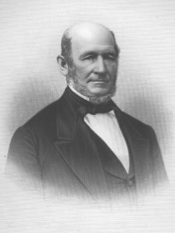 |
Heber C. Kimball | February 14, 1835 | Remained with the LDS Church and Brigham Young after 1844. In 1847, Kimball became First Counselor to Young. |
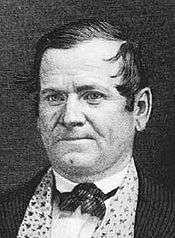 |
Orson Hyde | February 15, 1835 | Remained with the LDS Church and Brigham Young after 1844. In 1847, Hyde became President of the Quorum of the Twelve Apostles. |
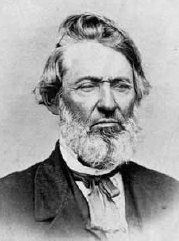 |
William E. McLellin | February 15, 1835 | Excommunicated from the Church of Jesus Christ of Latter Day Saints[3] in 1838. After 1844, McLellin joined for a short time multiple sects, including the Rigdonite, Strangite, Whitmerite and Hedrickite sects, each of which recognized his apostleship. |
 |
Parley P. Pratt | February 21, 1835 | Remained with the LDS Church and Brigham Young after 1844 and continued within the Quorum until he was killed in 1857. |
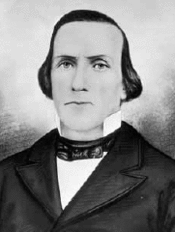 |
Luke S. Johnson | February 15, 1835 | Excommunicated from the Church of Jesus Christ of Latter Day Saints[3] in 1838. Later rejoined with Brigham Young and the LDS Church in 1846, but did not resume his former place in the Quorum. |
 |
William Smith | February 15, 1835 | On May 24, 1845, Smith succeeded his late brother Hyrum Smith as the Presiding Patriarch of the church,[4] but was disfellowshipped from the church and removed as both apostle and patriarch in 1845.[5][6] Following 1845, Smith broke with the LDS Church and Brigham Young and held various positions in the Strangite sect and his own Williamite sect. Ultimately Smith joined with the Reorganized Church of Jesus Christ of Latter Day Saints (RLDS Church). While Smith believed that he was entitled to become the presiding patriarch or a member of the Council of Twelve Apostles of the RLDS Church, he did not resume his place in the quorum and remained a high priest for the remainder of his life.[7] |
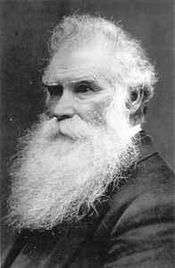 |
Orson Pratt | April 26, 1835 | Remained with the LDS Church and Brigham Young after 1844 and continued within the Quorum until his death in 1881. |
| |
John F. Boynton | February 15, 1835 | Excommunicated from the Church of Jesus Christ of Latter Day Saints[3] in 1838, joined with the short-lived Parrishites. After 1844, Boynton left Mormonism and never rejoined any Latter Day Saint sect. |
| |
Lyman E. Johnson | February 14, 1835 | Withdrew from the Church of the Latter Day Saints[3] in 1837 and was excommunicated in 1838. Johnson died in 1859, having never rejoined any Latter Day Saint sect. |
| |
John E. Page | December 19, 1838 | After 1844, Page joined with the Strangite and Brewsterite. Page went on to be an apostle in the Church of Christ (Temple Lot) or "Hedrickite" church. |
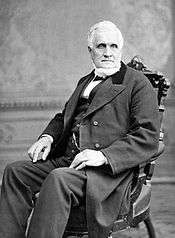 |
John Taylor | December 19, 1838 | Remained with the LDS Church and Brigham Young after 1844. In 1880, Taylor became 3rd President of the LDS Church. |
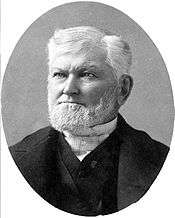 |
Wilford Woodruff | April 26, 1839 | Remained with the LDS Church and Brigham Young after 1844. In 1880, Woodruff became 4th President of the LDS Church. |
 |
George A. Smith | April 26, 1839 | Remained with the LDS Church and Brigham Young after 1844. In 1868, Smith became First Counselor to Young. |
 |
Willard Richards | April 14, 1840 | Remained with the LDS Church and Brigham Young after 1844. In 1847, Richards became Second Counselor to Young. |
 |
Lyman Wight | April 8, 1841 | Wight broke with all sects in 1844. He was ordained president of his own church, known as the Wightites. However, he later sided with the claims of William Smith and eventually of Joseph Smith III and the RLDS Church. |
 |
Amasa M. Lyman | August 1842 | Remained with the LDS Church and Brigham Young from 1844 to 1870. Was stripped of apostleship on October 6, 1867 due to a sermon he preached in Dundee, Scotland, which all but denied the reality of and the necessity for the atonement of Jesus Christ. In 1869, while not admitting any conversion to the Church of Zion, known as the Godbeites, Lyman began a relationship with William S. Godbe and the Church of Zion.[8] Lyman associated constantly, preached, and even openly participated in the Church of Zion.[8] Due to Lyman's renewed activism and rumors that Lyman would even become president of the Church of Zion, Lyman was excommunicated from the LDS Church on May 12, 1870.[8] |
The Church of Jesus Christ of Latter-day Saints (LDS Church)
In the LDS Church, the Quorum of the Twelve is officially referred to as the "Quorum of the Twelve Apostles" or "Council of the Twelve Apostles". The group normally has a leadership role in the church that is second only to the church's First Presidency. The Quorum implicitly follows the First Presidency's policies and pronouncements and its members are chosen by the First Presidency. However, when the First Presidency is dissolved—which occurs upon the death of the President of the Church—the Quorum of the Twelve Apostles becomes the church's governing body (led by the President of the Quorum of the Twelve Apostles) until they ordain a new President of the Church and he chooses counselors, which completes the reorganization of the First Presidency. Membership in the Quorum of the Twelve is typically a lifetime calling.
Community of Christ
In the Community of Christ, the Council of Twelve Apostles is one of the governing bodies in the church hierarchy. They hold the priesthood office of apostle and are responsible for the evangelistic witness of the church. Apostles are also high priests in the Melchisedec priesthood of the church.
The Church of Jesus Christ (Bickertonite)
The Church of Jesus Christ (Bickertonite) is the third largest denomination that resulted from the 1844 succession crisis.
At a conference in Green Oak, Pennsylvania, in July 1862, leaders of several branches in Pennsylvania, Ohio and Virginia came together and formally organized what they called "The Church of Jesus Christ". William Bickerton presided over the conference. Bickerton's two counselors in the newly organized First Presidency were George Barnes and Charles Brown who were ordained apostles. The members of the Quorum of the Twelve at that organization (ordered by seniority) were Arthur Bickerton, Thomas Bickerton, Alexander Bickerton, James Brown, Cummings Cherry, Benjamin Meadowcroft, Joseph Astin, Joseph Knox, William Cadman, James Nichols, John Neish and John Dixon. At the conference George Barnes reported receiving the "word of the Lord," which he related:
Hear the word of the Lord; Ye are my Sons and Daughters, and I have committed unto you the Keys of the Kingdom, therefore be ye faithful.[9]
In this church, the "Quorum of Twelve Apostles" are the chief governing officers. Currently, the president of the church and his two counselors are not separated from the quorum, as the total number of apostles in the quorum is twelve, as specified in the scriptures. Apostles (and all ministers—commonly called "elders") in this church are volunteers and are not given any compensation for their ministry.
Church of Christ (Temple Lot)
In the Church of Christ (Temple Lot) the Council of Twelve serves as the head of the church. The church seeks to strictly follow the church organization of the Bible and the Book of Mormon, and teaches that church offices added by Joseph Smith after publication of the Book of Commandments, such as a President of the Church and a First Presidency, were not consistent with the Bible and Book of Mormon, and therefore were not revelations from God (Sheldon 1999).
Remnant Church of Jesus Christ of Latter Day Saints
The Remnant Church of Jesus Christ of Latter Day Saints has an Apostolic Quorum that is, as yet, incomplete by design. As the Remnant Church seeks to "renew" the branch of the Latter Day Saint movement resulting from the 1860 Reorganization, it is attempting to follow the exact pattern of that prior reorganization. As such, there are presently five vacancies in the Quorum—as was the case in the Council of Twelve of what is now the Community of Christ in the early 1860s. The First Presidency of the Remnant Church is not drawn from the apostles. Instead, the prophet/president of the church is chosen by lineal descent from the movement's founder, Joseph Smith. The current members of the Quorum are: Ralph Damon, Gary Argotsinger, Don Burnett, Steve Church, Leland Collins, and Don Kite.[10]
Notes
- ↑ LDS Church Doctrine and Covenants 107:25–27, 36–37.
- 1 2 History of the Church 2:186–87.
- 1 2 3 4 5 Joseph Smith's original organization was named Church of Christ. In 1834, the official name changed to "Church of the Latter Day Saints" and again, in 1838, to "Church of Jesus Christ of Latter Day Saints". See:
Manuscript History of the Church, LDS Church Archives, book A-1, p. 37; reproduced in Dean C. Jessee (comp.) (1989). The Papers of Joseph Smith: Autobiographical and Historical Writings (Salt Lake City, Utah: Deseret Book) 1:302–303; H. Michael Marquardt and Wesley P. Walters (1994). Inventing Mormonism: Tradition and the Historical Record (Salt Lake City, Utah: Signature Books) p. 160. - ↑ History of the Church 7:418.
- ↑ B. H. Roberts (ed.), History of the Church 7:457–59.
- ↑ Hosea Stout journal, October 6, 1845.
- ↑ Paul M. Edwards, "William B. Smith: The Persistent 'Pretender'", Dialogue: A Journal of Mormon Thought, vol. 18, no. 2 (1985) pp. 128–39 at pp. 132–39.
- 1 2 3 Hefner, Loretta L. (1992), "From Apostle to Apostate: The Personal Struggle of Amasa Mason Lyman" (PDF), Dialogue: A Journal of Mormon Thought, Dialogue Foundation, 16 (1): 99–101, retrieved 29 April 2015
- ↑ Cadman, W. H. (1945). A History of the Church of Jesus Christ. Monongahela, PA: The Church of Jesus Christ.
- ↑ http://www.theremnantchurch.com/bio/apostles/
References
- Bergera, Gary James (2010), "Church Organization and Government", in Reeve, W. Paul; Parshall, Ardis E., Mormonism: A Historical Encyclopedia, Santa Barbara, CA: ABC-CLIO, ISBN 9781598841084, OCLC 699490059.
- Flake, Lawrence R. (2001), "The Quorum of the Twelve Apostles: An Introduction", Prophets and Apostles of the Last Dispensation, Provo, UT: Religious Studies Center, Brigham Young University, ISBN 1573457973, OCLC 46943088
- Holzapfel, Richard Neitzel (2010), "The Prophet's Final Charge to the Twelve", in Holzapfel, Richard Neitzel; Jackson, Kent P., Joseph Smith, the Prophet and Seer, Provo, UT: Religious Studies Center, Brigham Young University, ISBN 9780842527538, OCLC 495616860
- Nelson, William O. (1992), "Quorum of the Twelve Apostles", in Ludlow, Daniel H, Encyclopedia of Mormonism, New York: Macmillan Publishing, pp. 1185–1189, ISBN 0-02-879602-0, OCLC 24502140.
- Sheldon, William A. (1999). "A Synopsis of Church of Christ Beliefs as Compared to Other Latter Day Saint Churches". Independence, Mo.: Church of Christ (Temple Lot). Archived from the original on April 23, 2007. Retrieved April 26, 2007..
- Turley, Richard E., Jr. (2005), "The Calling of the Twelve Apostles and the Seventy in 1835", Joseph Smith and the Doctrinal Restoration: the 34th Annual Sidney B. Sperry Symposium, Provo, UT: Religious Studies Center, Brigham Young University, ISBN 1-59038-489-X, OCLC 60589119.
Further reading
- Allen, James B.; Esplin, Ronald K.; Whittaker, David J. (1992), Men with a Mission, 1837–1841: The Quorum of the Twelve Apostles in the British Isles, Salt Lake City, Utah: Deseret Book, ISBN 0875795463, OCLC 24375869
- "Chapter Twenty-Three: The Twelve to Bear Off the Kingdom", Church History In The Fulness Of Times: Religion 341-43 (Student Manual), Institute of Religion, Church Educational System, LDS Church, 2003, pp. 286–296
- "Historical Introduction", Record of the Twelve, 14 February–28 August 1835, Joseph Smith Papers Project, Church Historian's Press, LDS Church